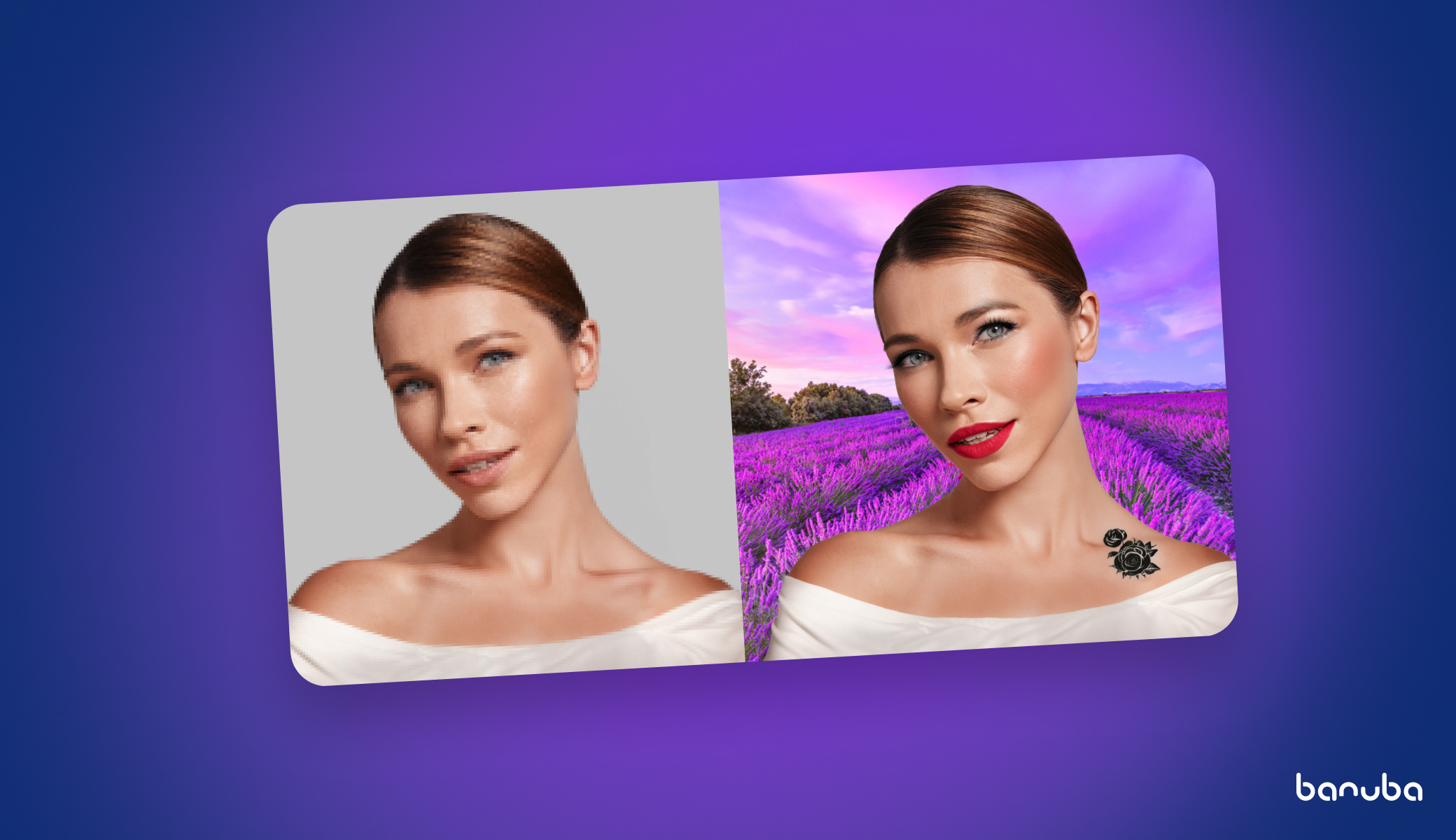What is an augmented reality SDK
An augmented reality SDK is a premade module that can be quickly integrated into an app to perform certain AR-powered functions. These can include augmented reality face masks, virtual makeup, beautification, avatars, and much more.
This technology has found widespread use in communication, dating, social media, eCommerce, eLearning, and much more. The main reason for use of SDKs is that they can be installed within a day while developing comparable features from scratch could take months or even years.
By the way, our Face AR SDK has two weeks of a free trial, so why not check it out?

We at Banuba specialize in Face AR - technologies dealing with tracking and augmenting faces on screens. So in this article, we will mostly focus on monetization features that have something to do with this.
Now, without further ado, let’s get to the specific ways how AR can help your app earn more.
Augmented reality filters as goods
With this approach, the augmented reality face masks become a commodity to be sold. There are three ways you can go about it.
The first one is the B2B option. Once your app has a user base large enough to attract advertisers, you can develop custom filters for them. These filters are a way for brands to stay at the top of their target audience’s minds and their effectiveness is reflected in their prices. For example, Snapchat’s sponsored lenses could cost up to USD 700.000 on holidays and special events (e.g. Superbowl or Halloween).
 A sponsored lens in Snapchat. Source
A sponsored lens in Snapchat. Source
The second option is the B2C route. While hiding augmented reality filters behind a paywall hasn’t caught on, there are other ways to sell them to individuals. One of such examples is Snapchat’s Create-your-own-lens. People can use it to make their own custom filters that are geofenced to a specific location. For a few dollars, people are able to share pictures of their weddings, baby showers, birthdays, and other similar events, customized with unique filters.
Cut of live streaming donations
This is an indirect way of monetizing an app which is, though, closely tied to using an augmented reality SDK.
This is how this works for TikTok:
- A content creator reaches 1000 followers;
- This same content creator gets the right to host live streaming sessions;
- Watchers buy in-app currency for fiat money and can reward streamers with gifts that are worth a certain amount of such currency;
- The streamer can convert their in-app currency into real money and transfer it to their account;
- TikTok takes its cut of the transaction.
 Application using augmented reality SDK
Application using augmented reality SDK
Given that the leading short video app is expected to earn 6 billion dollars in 2021, this monetization method is proven to work. It is largely possible due to the advanced AR features that assist creators in gaining an audience: augmented reality filters/masks, video editing, LUTs, and more.
Premium features
The Freemium model has been around for quite some time and has proved to be effective. An augmented reality SDK can be just what you need to add enough extra value that purchasing advanced features becomes enticing.
Our own AI Video Editor SDK can be an example of such an approach. It includes several premium features (e.g. video background replacement or picture-in-picture) that aren’t available by default and need to be purchased separately. The Face augmented reality SDK is also a premium feature in this case, as the functionality it provides is optional and can be safely disabled without affecting the core video editing features.
AR-commerce
Thanks to this feature, the users would be able to buy things they see on screen in just a few clicks.
One of the ways to implement it is to turn real-life products into AR filters. For example, we at Banuba can create a realistic representation of eyeglasses, makeup, or headwear and upload it to the app using our augmented reality SDK. The user can then try it on and either order the delivery or see where this product can be bought.
The second way is parsing the video frame-by-frame, detecting goods (e.g. clothes and footwear), and letting the user purchase them through a partner store. This is how it works in Chingari, an Indian short video app.
They teamed up with Amazon and let users purchase products they see in videos directly from their partner’s platform.
Mixed reality ads
Selling augmented reality ads is a good way to earn money by mixing real and virtual objects. Usually to make them work an app recognizes something physical (e.g. a mural or a picture on a package) and animate it on screen or otherwise change it. Augmented reality ads see 3,79 times higher ROI than the traditional ones which makes them a highly attractive proposition for potential customers.
Such content is usually fitting for the platforms with a high user base, like Facebook, TikTok, or Snapchat. And augmented reality ads are popular among world-renowned brands like Purina, Speedo, Maybelline, and others.
Conclusion
Augmented reality adds many opportunities for monetization. They are fitting for different kinds of apps, although some of them are more suited to applications with a medium-to-large user base. By using an augmented reality SDK some of these opportunities can be quickly opened to almost anyone. And if you already have an idea of how to make AR earn for you, feel free to experiment with Banuba Face AR SDK - it is free for 14 days!





 Application using augmented reality SDK
Application using augmented reality SDK

